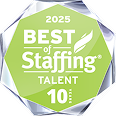The workplace has drastically changed in recent years. Some moved from conference tables to kitchen tables, and, for a while, just about everyone was forced to move their lunch meeting to a virtual chat. Now, as businesses are allowed to come back to their offices, many are rethinking their entire work model.
Some companies have chosen to stay fully remote. No need to pay for office space when employees have proven they can work just as effectively and efficiently from home. However, other companies that are allowing their employees to return to the office are realizing that the space is severely outdated.
Times have changed, and it’s time your company’s office space did too. Below are some tips on how to successfully redesign your office to accommodate the hybrid workforce of the modern era.
1. Start With Surveys
The easiest way to gauge your employees interest in returning to the office and what they would like to change about the layout is a company-wide survey. A quick Google Form with a handful of questions regarding employees’ intent to return and things they would like to change about the office space in order to accommodate for a hybrid work model is a convenient, user-friendly option.
Some examples of questions to include are:
- Do you intend to return to the office?
- If yes, how many days do you plan to work completely from the office?
- What have you been incorporating in your daily routine during your time working from home that you would like to carry over into your return to the office?
- What type of space works best for your work habits and what type does not?
2. Consider The Different Types Of Workers
A newly designed office space that accommodates a hybrid workforce will have to incorporate elements that consider all types of workers. For example, those workers who intend to spend most of their time in the office need a space to call their own where they can put their head down and get to work. Others will be in and out of the office, depending on several factors, and therefore don’t necessarily need their own, permanent space.
There will also be a need to amplify your office’s wifi and internet capabilities if that hasn’t been done already. Remote workers will expect to be able to call-in to meetings, and a bad, spotty internet connection can lead to frustration on both ends. If the internet capabilities haven’t been updated in the last five years, an upgrade is a must before a return to office.
3. Technology Will Be More Important Than Ever
Speaking of the internet, technology in general will be more important than ever in a hybrid office. You will need to have several webcams available for team-wide meetings, as well as reliable, quality speakers.
There should be a designated space, whether that be a conference room or a secluded corner of the office that is set up specifically with remote employees in mind. This way, when it comes time to start a meeting, the technology is already there and ready to go, and you aren’t having to set up and take down before and after every call.
4. Prioritize Mental Health
Especially in the last year, a major emphasis has been placed on mental health in the workplace. Returning to the office shouldn’t add any extra stress to the lives of your employees, and prioritizing mental health in your redesign plans can help with that. If there wasn’t one already, a specific, relaxing break area will allow employees to unplug for a few minutes in their day.
Small breaks can lead to greater productivity from your employees as well as increased morale throughout the entire office, so prioritizing these areas and catering to your team’s mental health needs should be high on your list.
This Redesign Is Permanent
Aside from these tips, the most important thing to remember when returning to the office is that these changes are going to be permanent. Adjusting your office to accommodate remote and hybrid employees should be a permanent shift. Invest in quality products that will last and redesign your office space in a way that makes sense long-term, because the hybrid workforce is here to stay.





